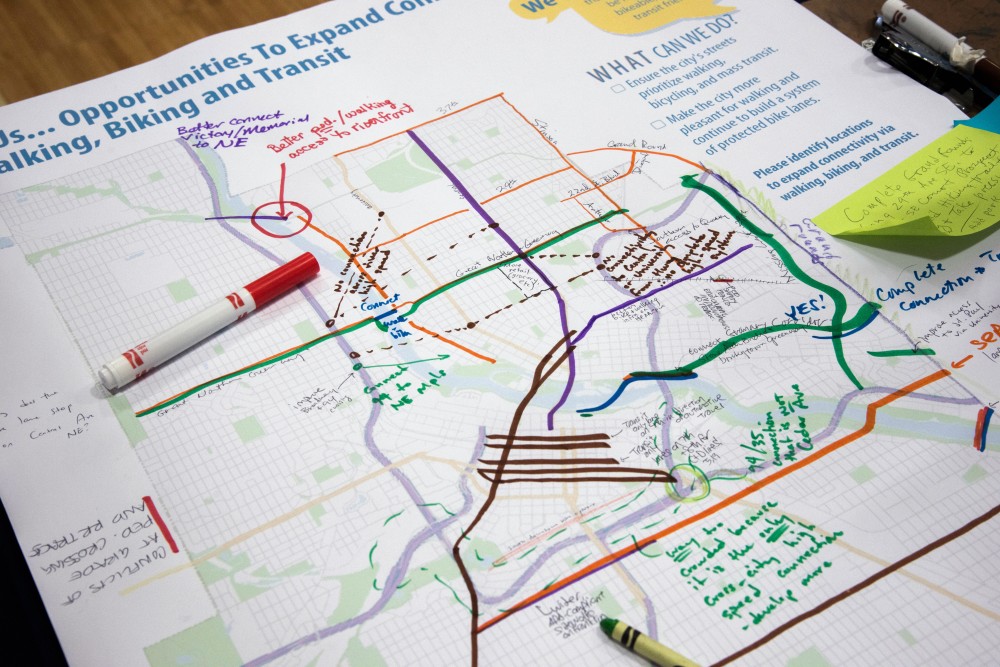Changes proposed in the Minneapolis 2040 Comprehensive Plan will require the City to consider improving its existing park and transit infrastructure.
Partnered organizations are seeking to further collaborate on the 2040 plan and awaiting the final submission in December. With zoning changes and increased density laid out in the plan, the future of green space and transportation in University of Minnesota areas will depend on collaboration with other regional entities.
The increased density laid out by the plan will require cooperation and separate efforts from the Minneapolis Park and Recreation Board and Metropolitan Council, who will lay groundwork for continued growth.
While areas that will see the greatest increase in density will require accompanying park infrastructure, MPRB was not a part of the original 2040 draft.
MPRB submitted a letter in September that applauded the efforts of the comprehensive plan but noted a lack of directly mentioning its organization. Following discussion, MPRB was added to the final draft of the plan.
Despite this collaboration, Southeast Como Improvement Association board member Bill Dane is concerned about density in Southeast Como and Marcy-Holmes. He said the population influx already puts strain on Van Cleve Park and surrounding green spaces, and the strain will worsen without space for new parks.
“We are going to have to be more creative about how the City and MPRB work together around providing park service when densification happens,” said Adam Arvidson, director of strategic planning with MPRB.
The comprehensive plan also creates a high-level transit vision that will lay out the City’s needs as new development comes in, putting an emphasis on pedestrians and alternative, equitable transportation.
Vince Netz, president of Prospect Park Association, understands density concerns for areas like Dinkytown, which he said doesn’t have the same transit availability as Prospect Park — a neighborhood with three light rail stations.
Reducing Dinkytown’s dependence on cars is worth striving for, Netz said, but is not possible without diverse alternative transportation options.
The comprehensive plan works within a framework for transit infrastructure set forth by the Metropolitan Council, who collaborate with the City for transportation needs.
Michael Larson, senior planner with the Metropolitan Council, said the comprehensive plan allows the Metropolitan Council to synchronize its transit investments with the City by pinpointing specific growth within Minneapolis over the next 20 years.
“It’s all an iterative … process involving lots of people at different points,” said Bonnie Kollodge, senior public relations manager with Metropolitan Council. “A comprehensive plan also is just not a static document … communities can continue to amend their plans.”













